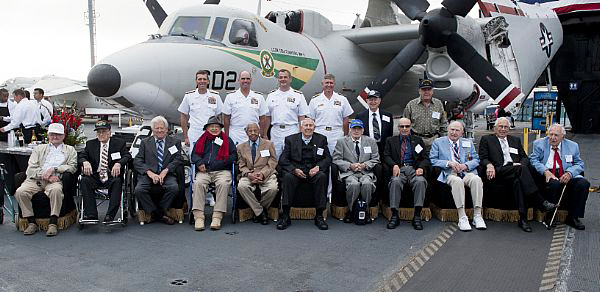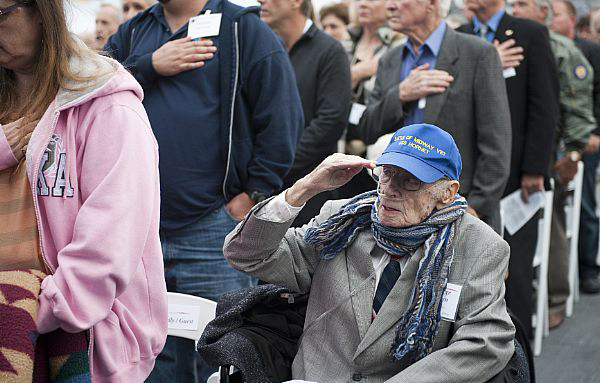This week, the Navy will commemorate the 71st anniversary of the Battle of Midway. The battle, which took place June 4 to 7, 1942, changed the course of the war in the Pacific and highlighted naval aviation's vast capabilities. In this blog, the Naval History and Heritage Command explains why the Battle of Midway was an unexpected victory.
What was it about the Battle of Midway that's important enough to talk about today and why are people still surprised - 71 years later - that the U.S. Navy was victorious?The Battle of Midway, which was fought over and near the tiny U.S. mid-Pacific base at Midway Atoll, represented the strategic high-water mark of Japan's Pacific Ocean war. Prior to the battle, Japan possessed general naval superiority over the United States and could usually choose where and when to attack. The Battle of Midway shifted the naval power dynamic of WWII. After Midway, the two opposing fleets were essentially equals, and that shift enabled the United States to take the offensive.
The battle began when Japanese naval forces moved on the base in an effort to draw out and destroy the U.S. Pacific Fleet's aircraft carrier striking forces, which had embarrassed the Japanese Navy in mid-April during the Doolittle Raid on Japan's home islands and then again at the Battle of Coral Sea in early May.

San Diego- U.S. Navy officers, along with veterans, gathered for a photo opportunity during the 71st Battle of Midway commemoration ceremony. (U.S. Navy photo by Mass Communication Specialist Third Class Bradley J. Gee/Released)
Japan's navy planned to quickly knock down Midway's defenses, follow up with an invasion of Midway's two small islands and establish a Japanese air base there. Their plan was for the U.S. carriers to arrive at Midway too late to save island and for Japanese forces to have a sweeping victory after U.S. naval forces proved insufficient compared to well-tested strength of their carrier air power.
How did the U.S. Navy seize the victory and shift the naval power dynamics? The easy answer is superior intelligence. American communications intelligence deduced Japan's plan well before battle began and allowed Admiral Chester W. Nimitz, U.S. Pacific Fleet commander, to establish an ambush with Navy carriers ready and waiting for the Japanese.

San Diego- Retired U.S. Navy officer Lt. George Bernstein gives a salute during the playing of the National Anthem at the 71st Battle of Midway commemoration ceremony. The Battle of Midway took place June 4-7, 1942, in which U.S. Navy carrier strike forces prevented the Japanese from capturing control of Midway Island in the Pacific. The victory proved to be a pivotal point of World War II and is an important marker in naval heritage. (U.S. Navy photo by Mass Communication Specialist Third Class Bradley J. Gee/Released)
On June 4, 1942, the trap - the second of the Pacific War's great carrier battles - was sprung. U.S. naval aviators' perseverance, sacrifice and skill, and a great deal of good luck on the American side cost Japan four irreplaceable fleet carriers; only one of the three U.S. carriers present was lost. Although the base at Midway was damaged by Japan's air attack, the base remained operational and later became a vital component in the American trans-Pacific offensive.
Why is Midway still remembered as one of the most important WWII battles?
"This memorable American victory was of cardinal importance, not only to the United States but to the whole Allied cause...At one stroke, the dominant position of Japan in the Pacific was reversed." -Winston Churchill - Article By Jason Kelly Navy Life
